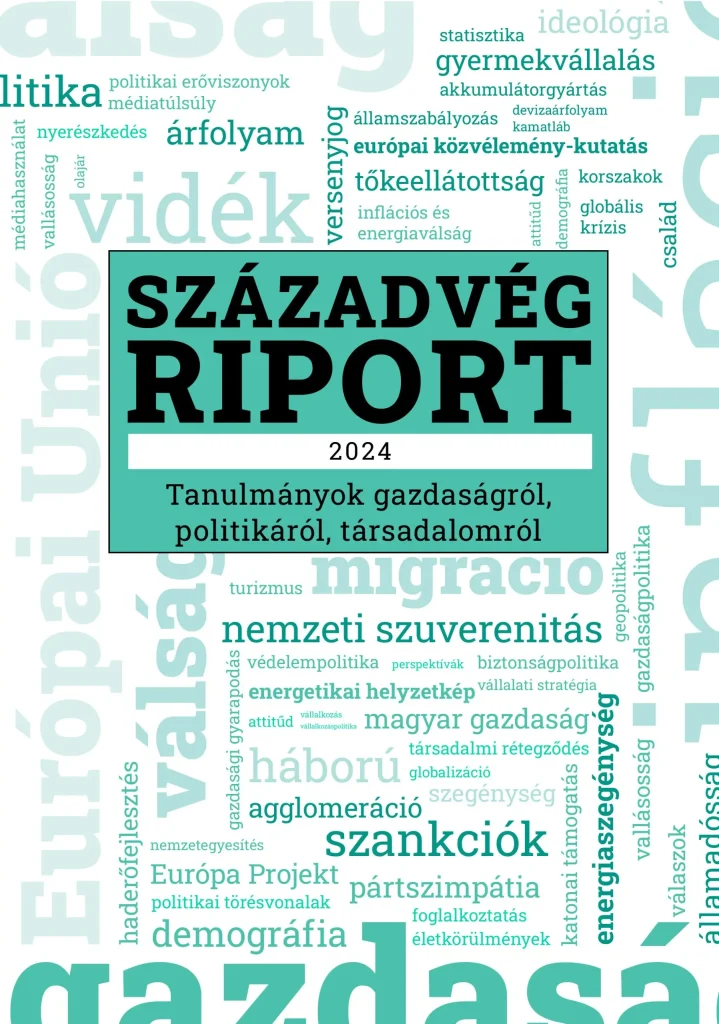The prosperity index remained in negative territory, determined by the uncertainty generated by the prolonged Russia-Ukraine war and the economic sanctions. Significant improvement in economic expectations is likely to occur if the war ends, inflation remains in the central bank’s target range (between 2% and 4%), the interest rate environment becomes more favourable, the European economy strengthens, and energy markets sustain low prices.
One sub-index of the household prosperity index strengthened, while three sub-indices weakened month on month in April 2025. Employment continued to be the most positively assessed, with a deterioration from -0.7 in the previous month to -2.4. In April, the perception of the economic environment deteriorated from -27.0 in the previous month to -30.7, and the sub-index measuring inflation perception changed from -68.9 to -72.1, while that measuring the perception of one’s financial situation strengthened from -11.6 to -11.2.
Compared with March, the biggest positive shift in the April 2025 household survey was that people were planning their major expenditures for the coming year more consciously.
In fact, when asked “Are you planning any major expenditures in the next year (e.g., buying a home, renovating your home, purchasing a car, etc.)?” in April, 26.3% of respondents answered yes, which is 7.3 percentage points more than in March.
Looking at households’ sense of prosperity by age group, one of the five categories shows a strengthening, while four show weakening. We measured an improvement in the 30-39 age group: after a gain of 1.8 index points, the -16.9 index point is the third highest among age groups this month. Those in the over-60 age group reported virtually no change in their perception of the economic situation (a decline of 0.1 index points) at -16.4 index points. This is followed by the 18–29 age group with -16.8 index points (a decrease of 2.3 index points). In the 50–59 age group, after a decrease of 5.2 index points, we measured –18.4 index points. Among those aged 40–49, we measured -20.3 index points in April, which represents a 3.3 index point decline from March.
The business survey showed a decline in all four sub-indices in April. In April, the economic environment sub-index fell from -29.9 in the previous month to -35.7, the business environment index from -24.3 to -27.0, the production environment sub-index from -11.1 to -11.5 index points, and the industrial environment index from -5.4 to -8.7. The most significant deterioration during the month was in perceptions of the economic environment, which may have been influenced by the uncertainty caused by the unfolding tariff war.
In April 2025, the biggest positive change for companies was measured in relation to their price enforcement in the previous year.
When asked “How has your company been able to change the prices of its products in the past year?”, company managers gave more favorable answers in April than in March in terms of profitability. This month, 17.1% of companies (down from 20.1% in March) reported that they had raised prices by less than 1% over the past year. 7.4% of companies implemented product price increases of between 1 and 2% (-0.2 percentage points compared to March). Product price increases between 2% and 4% were reported by 10.3% of companies (-0.3 percentage points), between 4% and 5% by 13.7% (after 12.7% in March), between 5% and 6% by 7.6% (+0.8 percentage points), between 6% and 7% by 4.3% (-0.8 percentage points), while price changes of over 7% were implemented by 26.2% (+1.0 percentage points).
Looking at the breakdown of companies by sector, it can be seen that, on average, the sense of prosperity improved in one, while it worsened in four. This month, agriculture grew by 0.3 index points, while trade fell by -1.6 index points, industry by -4.6 index points, construction by -3.6 index points and services by -1.9 index points. In April, the strongest sense of prosperity was recorded in agriculture (-11.7) and the weakest in trade (-22.4).
The purpose of the prosperity survey conducted by Századvég Konjunktúrakutató is to provide information to decision-makers and analysts on current and near-term economic developments. Since August 2019, our Institute has been producing the business and consumer prosperity index on a monthly basis. Our monthly survey asks 1,000 business leaders and 1,000 adult residents about their assessment of the economic situation and their expectations. For the two groups, we ask 29 and 28 questions respectively, covering a wide range of economic life. Among the responses received, positive ones (e.g. expected economic improvement) are given a positive score, while negative ones (expected decrease in employment) are given a negative score. The scores are then averaged and converted to a scale between -100 and +100 to obtain the prosperity indices. Thus, the higher the value of the prosperity indices, the more positive households’ and companies’ perception of the economy is. In addition, for both the household and the business survey, 4 sub-indices are constructed using a subset of the questions to illustrate the evolution of economic sentiment in a particular area.
